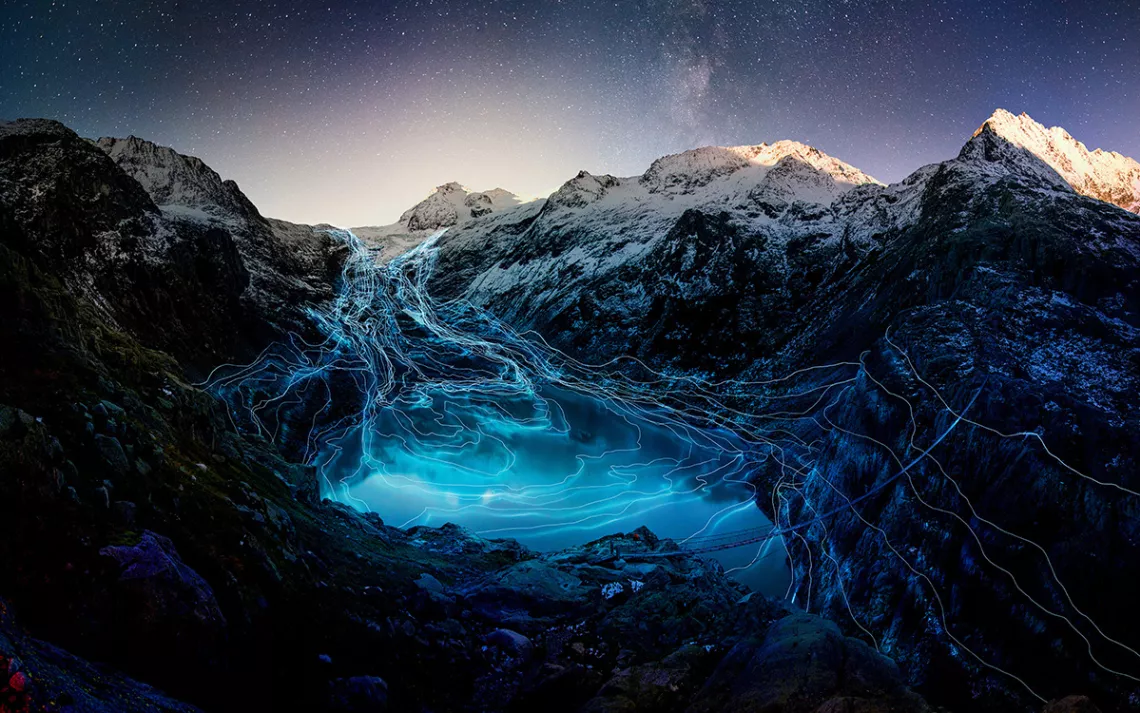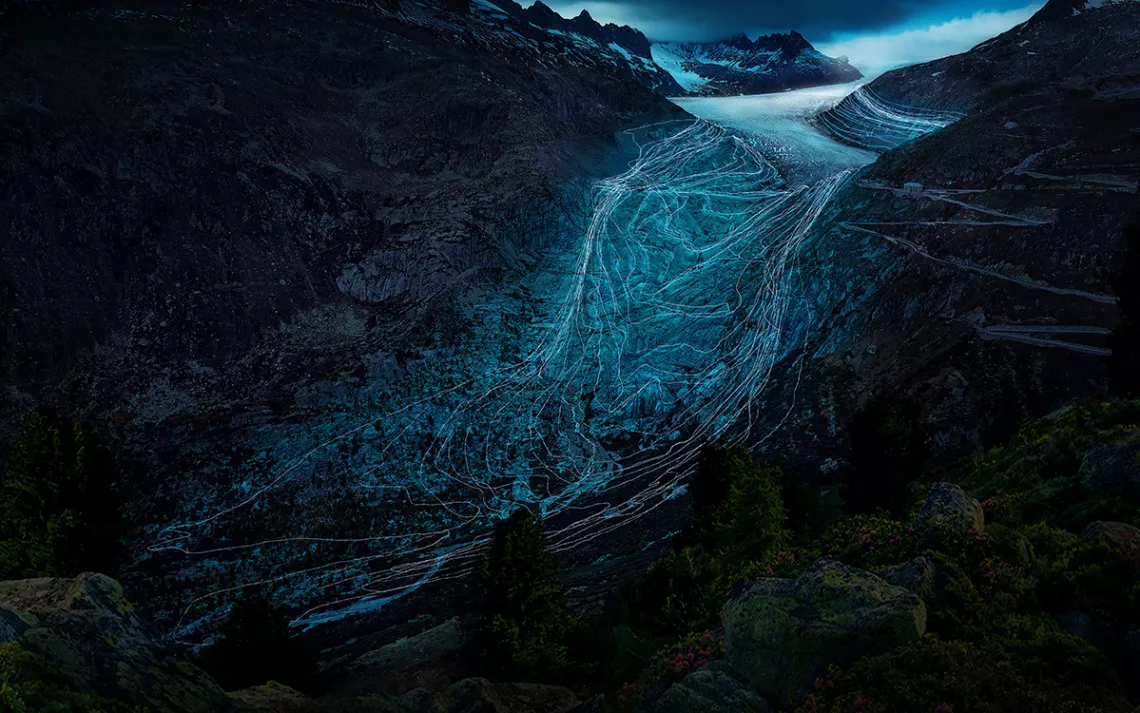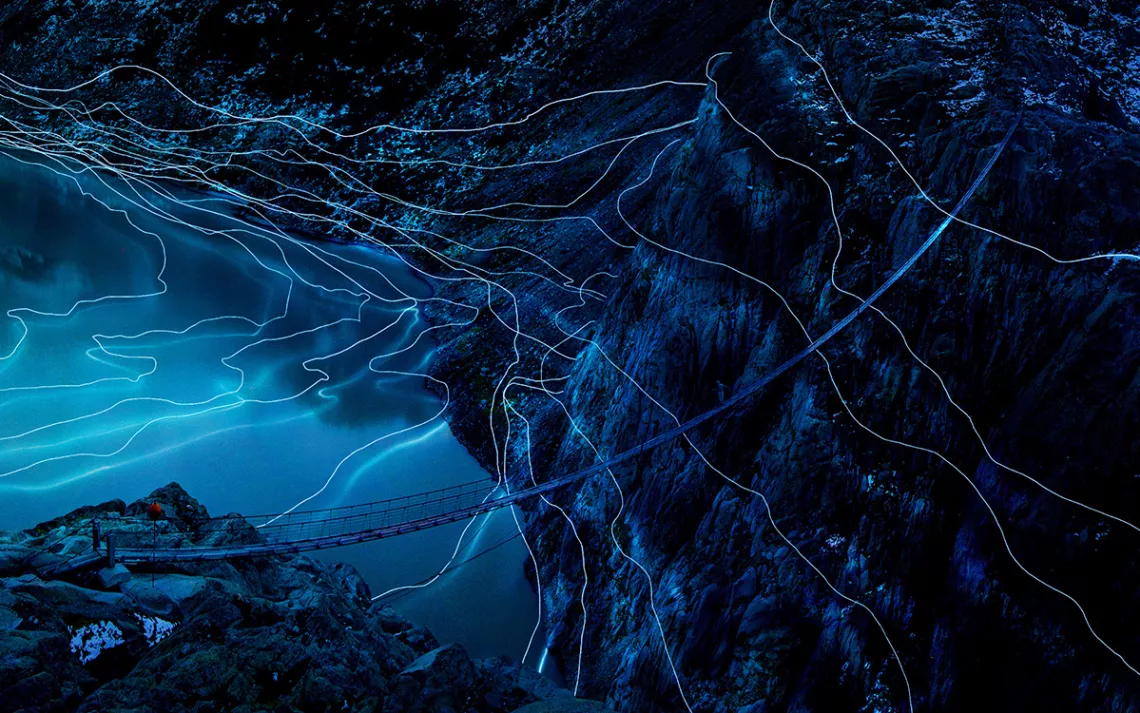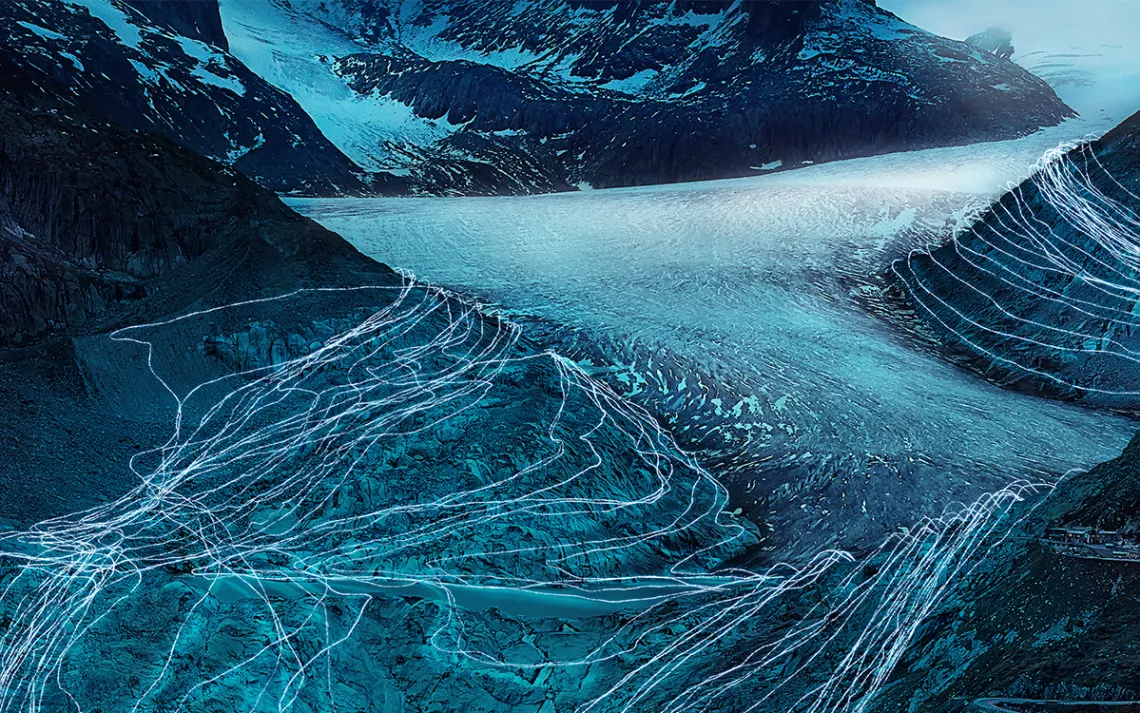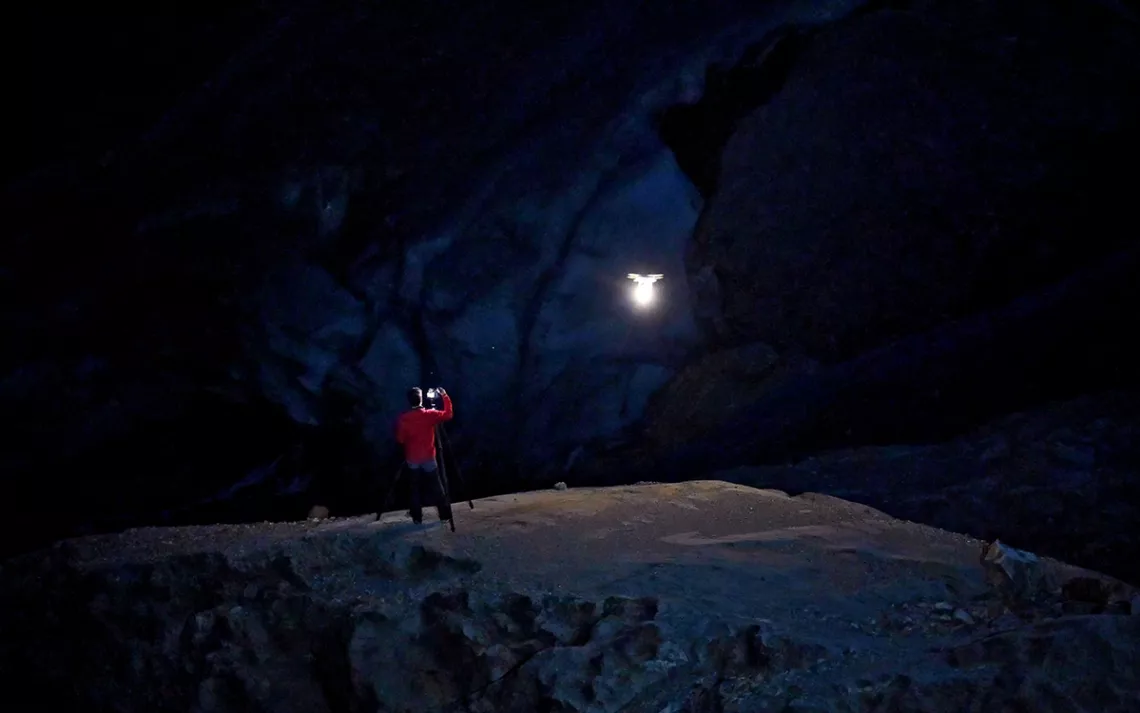Fabian Oefner’s Art by Experiment
Meet the Swiss photographer at the border of art and science
Photos courtesy of Studio Oefner
For Fabian Oefner, art and science are different languages describing a shared reality. As an “experimental photographer,” he likes to work somewhere in between the two. In setting up for a shoot, Oefner is as likely to bring along syringes, magnets, obscure chemicals, and bubble blowers as lighting equipment and his camera.
“I didn’t feel 100 percent comfortable in the science world. I didn’t feel 100 percent comfortable in the art world. I think the result of that is I’m on the border of both of them,” Oefner said. “I never really made a distinction between the two—they were just different ways of looking at things.”
Oefner grew up in Switzerland and learned at a young age to follow where his curiosity led. The same spirit that drove him to hike glaciers also propelled him to figure out how to use a camera. As he got older, he began to explore other artistic mediums. While Oefner is best known for his photography, he works in video and sculpture as well. He doesn’t think of himself as a photographer, just someone who knows how to use a camera.
In 2016, the colorful glint of oil in a puddle caught Oefner’s eye. Back at home, he designed an experiment—using a syringe, he placed droplets of oil into a dark pool of water, then watched them spread and take shape. He took a few photos, then repeated the process. He called the series “Oil Spill.”
“You have an expectation of what’s going to happen,” Oefner said. “But when you see how exactly the oil gets distributed and how it shimmers. . . . I’m in awe every time I see these experiments and am just happy to have a camera there to be able to share it with the world. For me, the beauty is the experiment itself. I take as much joy out of that as the actual photograph.”
Much of Oefner’s art is an exploration of phenomena we know but do not, he feels, completely understand. His photographs are a translation of the rational and objective description of scientific thought into something stranger, but no less true.
Oefner thinks there can be a gap between scientific discovery and public understanding, particularly when it comes to a subject like climate change. After reading a study by the Glaciology Institute at ETH Zurich on glacial retreat in Switzerland, he was interested. He also thought he could add something to the conversation.
“That was a rather rational way of describing what is happening to the world. I decided to take that data and present it in a visually compelling way,” Oefner said. “I think more people are touched by a beautiful image than a spreadsheet, and I think that’s where I can use my artistic mind.”
Oefner programmed the historic ranges of the Rhône glacier into a drone equipped with a pale blue light and took a series of long-exposure photographs that trace the retreat of the glacier with what look like glowing topo lines on a map. Oefner says that he wanted to approach glacial retreat from a new angle and get away from the before and after photos of empty valleys once full of shifting ice.
Now 35, Oefner started hiking to the glacier he later photographed when he was 10 years old. The glacier has retreated by a mile since that first visit. He sees the urgency of the climate crisis in the changing landscapes of his home country, but he wants his art to draw people in rather than immediately shock them. Oefner hopes that beauty can inspire a curiosity that fear cannot.
“I’m always striving to create something beautiful,” he said, “even if it’s a topic that’s uncomfortable.”
*

Above: Oil Spill Number 1; Below: Oil Spill Number 3


Above: Oil Spill Number 5; Below: Oil Spill Number 8


Above: Oil Spill Number 13; Below: The artist at work.

 The Magazine of The Sierra Club
The Magazine of The Sierra Club
